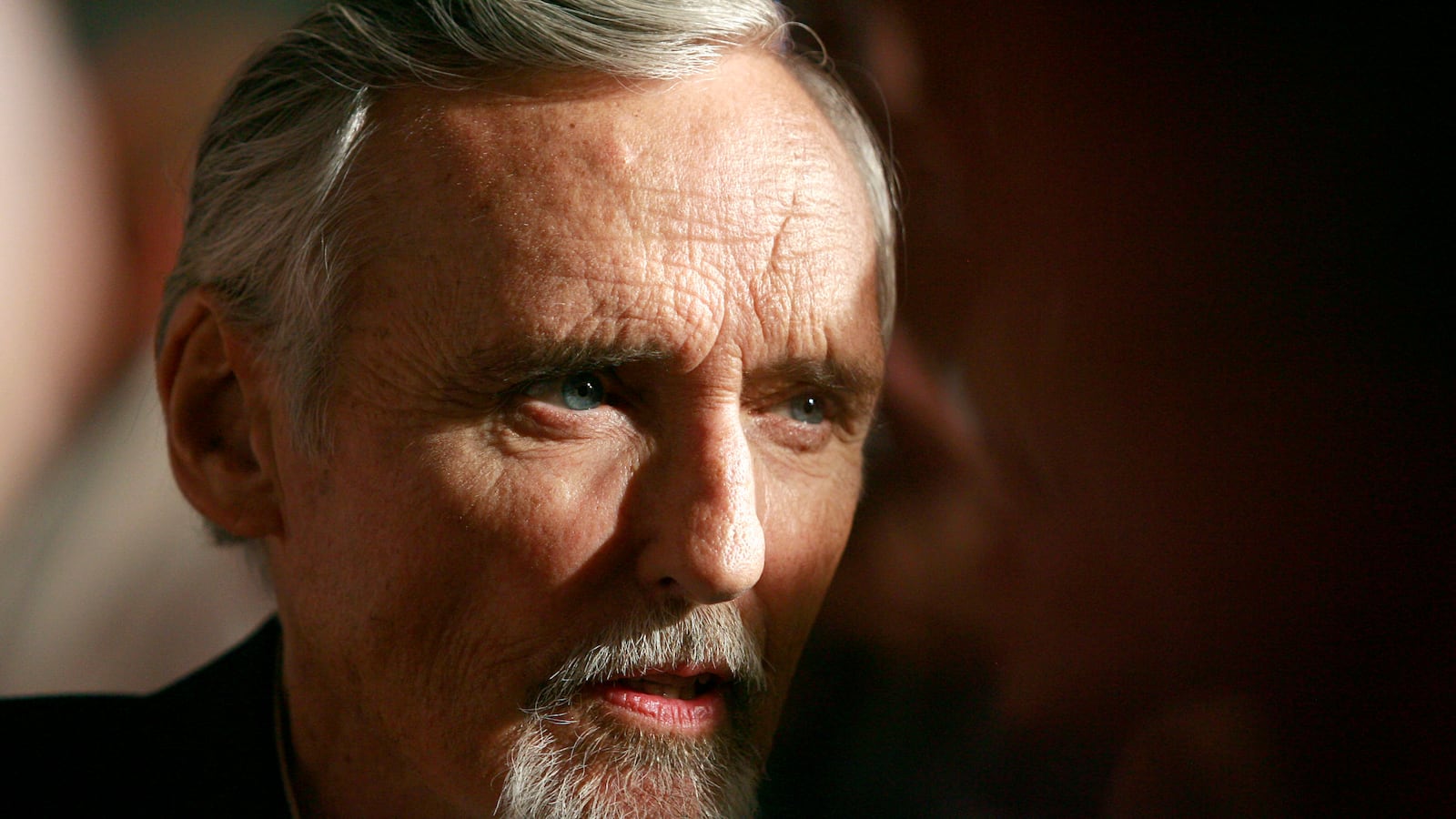Cut to the year 1969. The jukebox blasts “Aquarius/Let the Sunshine In” by the 5th Dimension. To the tune of Jimi Hendrix and other pop-music icons featured on its soundtrack, a flick about two pot-smoking biker drug dealers who hit the road and take acid during Mardi Gras has lines around the block. At the vanguard of the indie-film movement, making $40 million on a $300,000 budget, Easy Rider practically upends the Hollywood studio system, launching to fame its 33-year-old director and star, Dennis Hopper.

Hippies, seekers, outlaws, and misfits across the globe hang onto every word of this ragged prophet of the age, a cultural revolutionary who with cameras and microphones in his face at every turn, espouses to the world his radical, even dangerous belief that culture has completely moved beyond the written word.
Wild-eyed with greasy hair flowing from under his felt cowboy hat, the jabbering madman offers a blurb to The New York Times: “I was terrible in school, because I didn’t like reading. I’ve read maybe eight novels in my life.”
“Oh, you don’t read either,” Charles Manson asked Hopper soon afterward, when the two allegedly met for the purposes of doing a biopic. By then the writing was already on the wall at Hopper’s new home in the high desert of Taos, New Mexico. He dubbed his sprawling 22-room adobe—once the haunt of writer D. H. Lawrence—the Mud Palace. By the library hung a poster quoting his friend Andy Warhol’s maxim, “I never read, I just look at pictures.”
Until Hopper came along, hellfire trailing behind the back of his chopper, Hollywood rebels were expected to possess a whiff of literary savoir faire. Almost 15 years before, in 1955, on the set of Rebel Without a Cause, Warner Bros. photographed teenage Hopper as he read a copy of Constantin Stanislavski’s An Actor Prepares. Press materials for MGM’s 1960 Key Witness, in which Hopper played a switchblade killer who haunts East L.A. on his Harley V-Twin Knucklehead, hailed how “Dennis rises about 10 o’clock, reads Nietsche [sic] (and modern plays) poolside at his Hollywood apartment.”
Even Hopper’s mentor, James Dean, knew the importance of a bookish image. For his breakout feature in Life magazine, Dean had gotten a photographer to trail him around rainy Times Square while he hunched in an overcoat, a pose inspired by the classic photo of Albert Camus that graced the back of one of the tough-guy’s favorite existentialist paperbacks. The resulting image canonized Dean’s brooding persona, and set him up as a rebel icon for generations to come.
Now that Hopper was about to take over the dead Dean’s legacy as Hollywood’s token rebel, he dropped the literary pretense altogether, flaunting his attention deficit disorder as nothing less than a progression of culture, a wallpapered reality in which pictures were worth thousands of dollars more than words.
“I’d rather live it, man, get out in the street, get it on,” concluded Hopper’s anti-reading rant. His big profile ran in the paper of record (not that Hopper would actually read it) on the same day that man first landed on the Moon, providing the iconic footage that would one day launch the very first broadcast of MTV.
“I invented MTV, some people say,” Hopper remarked of that harbinger of non-reading youth, looking back on Easy Rider’s revolutionary pop soundtrack. By then, ever the contrarian, the aging Hopper rebelled the other way. He became an avid reader, with so many books in his futuristic compound in down-and-out Venice, that when Bob Dylan came over to visit, he paid less attention to all the Pop art hanging on the walls than the bookshelf.
“Wow, look at all these books!” marveled Dylan. “Have you read all these books?”





